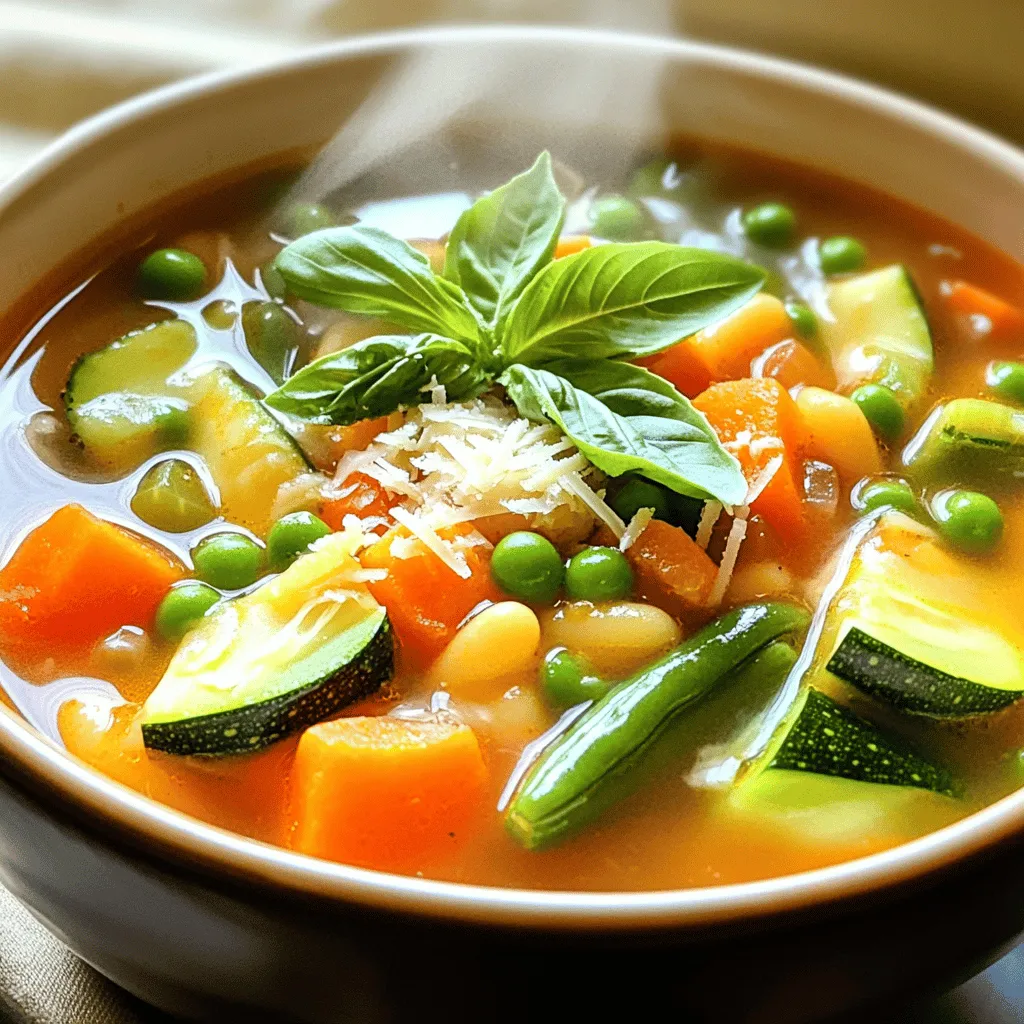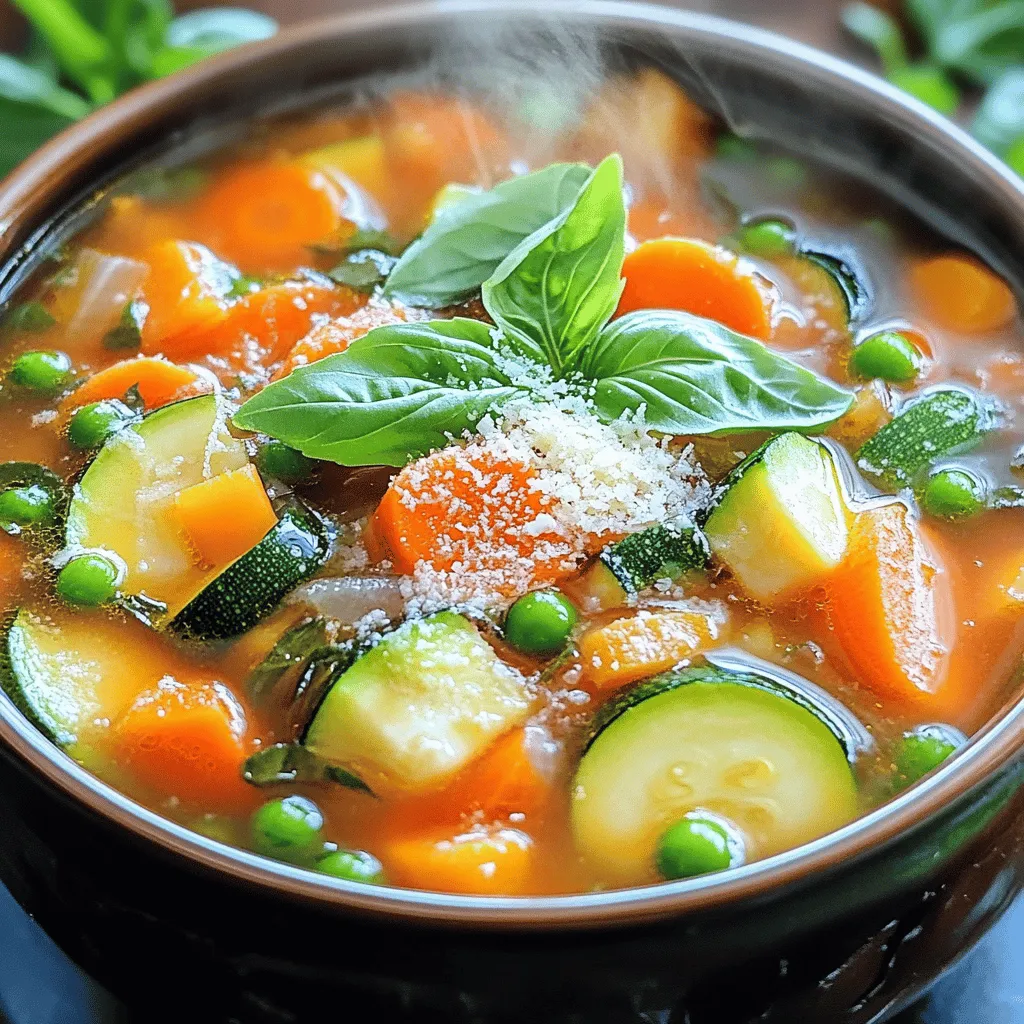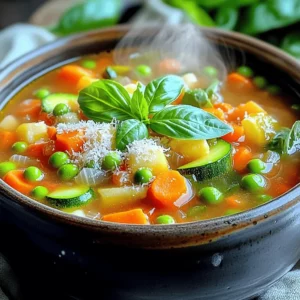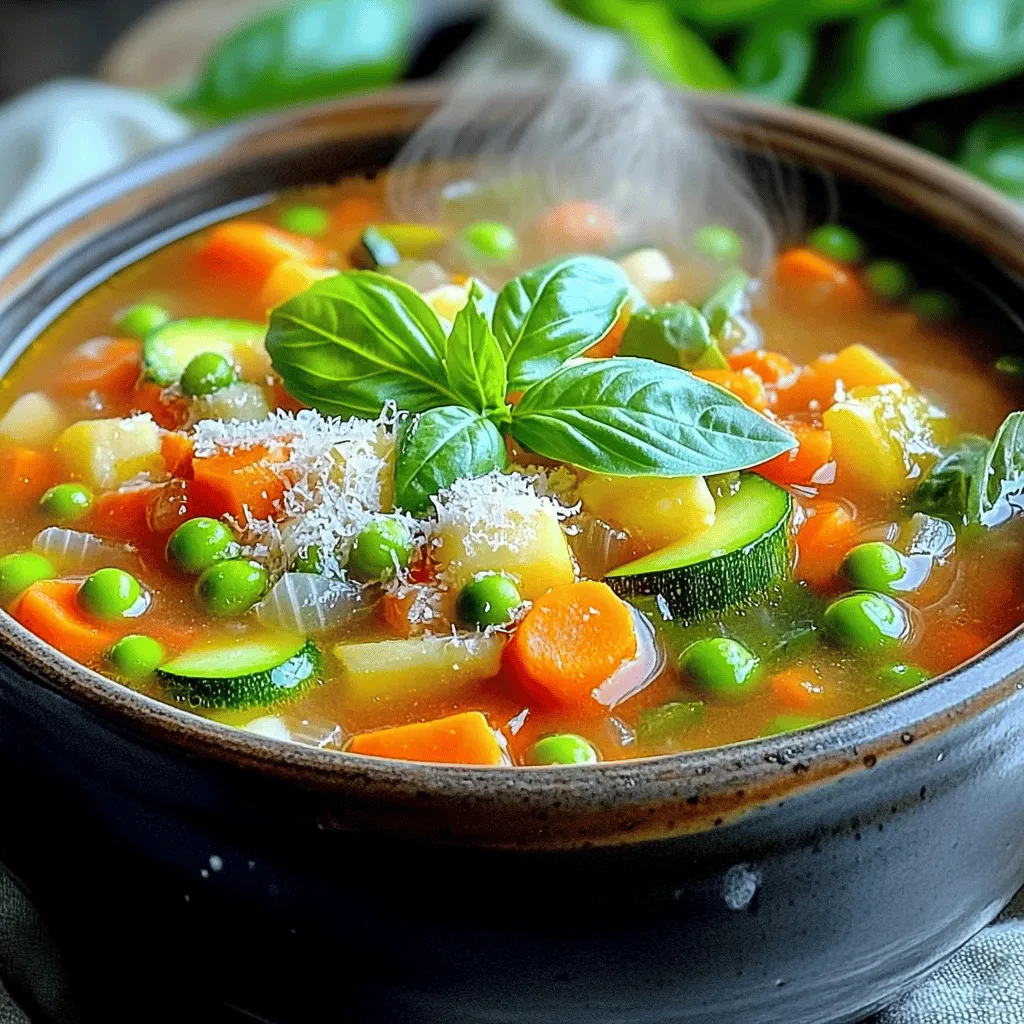Spring has arrived, and it’s the perfect time to savor a warm bowl of Spring Minestrone Soup! Packed with vibrant, fresh ingredients, this dish celebrates seasonal flavors. In this guide, I’ll walk you through essential components, preparation tips, and creative variations to make this soup your own. Discover how to elevate your minestrone experience and reap its nutritional benefits. Let’s dive in and bring the taste of spring to your table!
What Ingredients Are Essential for a Delicious Spring Minestrone Soup?
Fresh ingredients bring life to spring minestrone soup. Start with seasonal vegetables to capture spring’s essence. You need onion, garlic, carrots, celery, zucchini, green beans, peas, and tomatoes. These veggies offer bright colors and flavors.
When choosing fresh vegetables for soup, look for vibrant colors and firm textures. Fresh peas add sweetness. Green beans should snap easily. Zucchini should feel firm and smooth. For the best taste, use local produce when you can.
Choosing the right herbs boosts flavor. Dried thyme and basil work well in this minestrone recipe. They add warmth and depth. If you prefer fresh herbs, use basil or parsley for a brighter taste. Add herbs towards the end of cooking for the best flavor.
Pasta is another key ingredient. Small shapes like ditalini or small shells fit best in the soup. They soak up broth and flavors. Use whole-grain pasta for extra nutrition. Cook pasta separately to avoid mushiness. Add it right before serving to keep its texture.
This blend of fresh ingredients makes the soup colorful and tasty. For the full recipe, you can find all the steps to create this delightful dish.
How Do You Prepare Spring Minestrone Soup Step-by-Step?
To make easy minestrone soup, start with your fresh ingredients. Gather your vegetables: onion, garlic, carrots, celery, zucchini, green beans, and peas. These vegetables give the soup a great base and lots of flavor.
What Are the Key Steps in Cooking the Soup?
First, heat one tablespoon of olive oil in a large pot. Once shimmering, add the diced onion and sauté for 3-4 minutes. You want the onion to turn translucent. Then, stir in minced garlic, diced carrots, and celery. Cook for another 5 minutes until soft.
Next, add diced zucchini, green beans, and peas. Cook for 3 minutes, stirring often. Now, pour in diced tomatoes and vegetable broth. Bring the mixture to a simmer. This step is crucial for the flavors to blend well.
After that, add cooked cannellini beans, dried thyme, and dried basil. Season with salt and pepper. Let the soup simmer for 15-20 minutes. This time allows the vegetables to become tender and tasty.
How Long Should You Simmer the Soup for Optimal Flavor?
Simmering the soup for 15-20 minutes is essential. This time helps the vegetables release their flavors. It also helps the herbs infuse into the broth. If you let it simmer too long, the vegetables may become mushy.
What Are Common Cooking Techniques for Soups?
When making minestrone, common techniques include sautéing and simmering. Sautéing builds the base flavor. Simmering allows the ingredients to cook together. Stirring often keeps the soup from sticking and helps mix all the flavors. For the full recipe, follow the steps carefully to ensure your soup turns out great!

What Variations Can You Make to Customize Your Minestrone?
You can change your minestrone soup to fit your needs. For a gluten-free option, skip regular pasta. Use gluten-free pasta or add grains like quinoa or rice instead. This will keep the soup hearty and filling.
To add more texture, think about using different beans. Chickpeas or lentils can give a nice bite. You can also toss in some cooked farro or barley. These grains add chewiness that makes each spoonful interesting.
If you have leftover vegetables, don’t waste them. Chop up any you have and toss them in. Broccoli, bell peppers, or even roasted veggies can boost flavor. Just remember, add them according to how long they take to cook.
When you look at seasonal changes, you can alter the soup too. In summer, add corn and tomatoes for a sweeter taste. In the fall, consider sweet potatoes or squash for warmth. Each season brings fresh choices to make your soup special.
For the full recipe, check out the details above. Enjoy creating your own minestrone!
What Nutritional Benefits Does Spring Minestrone Soup Offer?
Minestrone soup nutrition brings many benefits to your meal. Each bowl is packed with fresh veggies, beans, and broth. This soup is low in calories yet filling. It helps you meet daily vitamins and minerals.
How Does This Soup Contribute to Your Daily Nutritional Needs?
Spring minestrone soup is a great way to boost your intake of vegetables. It often includes carrots, zucchini, and green beans. These colorful foods provide fiber, which aids digestion. A serving can help you reach your daily goal of veggies. Including beans adds protein, which is essential for muscle health.
What Are the Health Benefits of Using Fresh Vegetables?
Using fresh vegetables in soup offers many health benefits. They are full of vitamins like A, C, and K. Fresh veggies also contain antioxidants, which help fight illness. Eating a variety of colors in your soup can improve your overall health. Each ingredient adds unique nutrients. For example, spinach is high in iron, while tomatoes provide lycopene.
Why Are Beans Important in a Minestrone Recipe?
Beans are a key part of any minestrone recipe. They offer protein and fiber, which keep you full longer. Cannellini beans or kidney beans work well in this dish. They also add creaminess that enhances the soup’s texture. Plus, beans are low in fat and high in nutrients. Including them makes your soup even healthier.
For the full recipe, check out the Spring Minestrone Soup details above.

What Tips Can Enhance the Flavor of Your Minestrone Soup?
To make your minestrone soup shine, focus on fresh, seasonal ingredients. Using fresh vegetables makes a big difference. Try to shop at local markets. You will find the best flavors there.
What Techniques Can Elevate Basic Soup Flavors?
Start by sautéing your onions and garlic in olive oil. This step builds a good base for your soup. Add a pinch of salt while cooking to draw out moisture. This technique adds depth to your dish. You can also roast your vegetables before adding them to the soup. Roasting brings out their natural sweetness.
How to Properly Season Your Minestrone for Maximum Impact?
Seasoning is key. Use salt and pepper to taste. Try adding dried herbs like thyme and basil early in cooking. Fresh herbs like basil should be added at the end for a bright flavor. Taste your soup as it simmers. Adjust the seasoning as needed for balance.
What Are Some Unique Garnishes That Complement the Dish?
Garnishes can elevate your soup’s look and taste. Fresh basil leaves add a lovely touch. You can sprinkle grated Parmesan cheese on top for creaminess. A drizzle of high-quality olive oil adds richness. For a splash of color, add a few fresh peas or chopped greens right before serving.
For a delicious recipe, check out the Full Recipe.
How Should You Serve and Store Spring Minestrone Soup?
Serving Spring Minestrone Soup can be a fun experience. I enjoy serving it hot, right from the pot. This soup pairs well with crusty bread or a fresh salad. You can also add a sprinkle of Parmesan cheese on top for extra flavor. Fresh basil leaves make a beautiful garnish. They add a pop of color and taste.
If you have leftovers, storing them is easy. First, let the soup cool down. Then, transfer it to airtight containers. This keeps the soup fresh for later. You can store it in the fridge for up to three days. For longer storage, place it in the freezer. It can last up to three months in the freezer. Just remember to label the containers!
Meal prep can be a great way to enjoy soup all week. You can make a big batch of Spring Minestrone Soup ahead of time. This is perfect for busy days. Simply divide it into servings. Store them in containers for quick meals. You can heat them up on the stove or in the microwave. This method saves time and ensures you have healthy meals ready.
When preparing soup in advance, consider using fresh ingredients. Fresh veggies will keep the soup tasty. Cook the soup fully before freezing. This way, you capture the best flavors. Enjoy the ease of having homemade soup ready to go! For the full recipe, check out the details above.
Spring minestrone soup brings vibrant flavors and nutrients together in a bowl. We explored essential fresh ingredients and suggested the best herbs for rich flavor. You learned simple steps to create your soup and how to simmer it for maximum taste. Customizing your soup allows for unique twists, making it fit your needs. The health benefits from fresh veggies and beans are significant. Remember, enhancing flavors and proper storage are key to enjoying your soup later. With these tips, you can create a delicious and nutritious spring minestrone to share.







